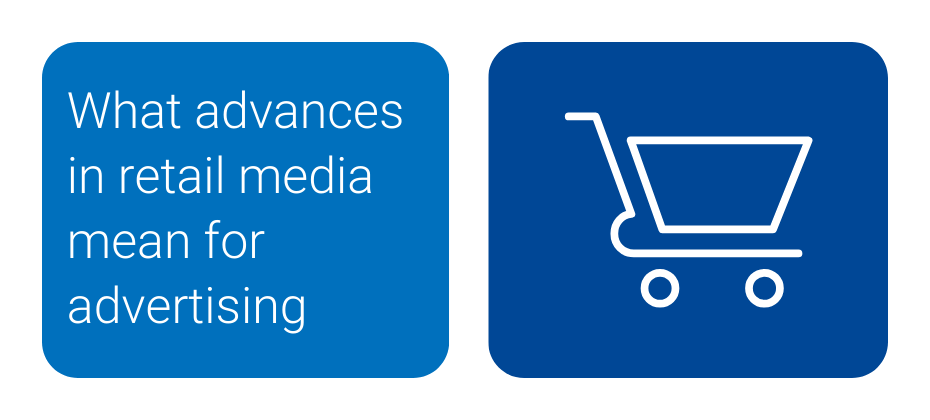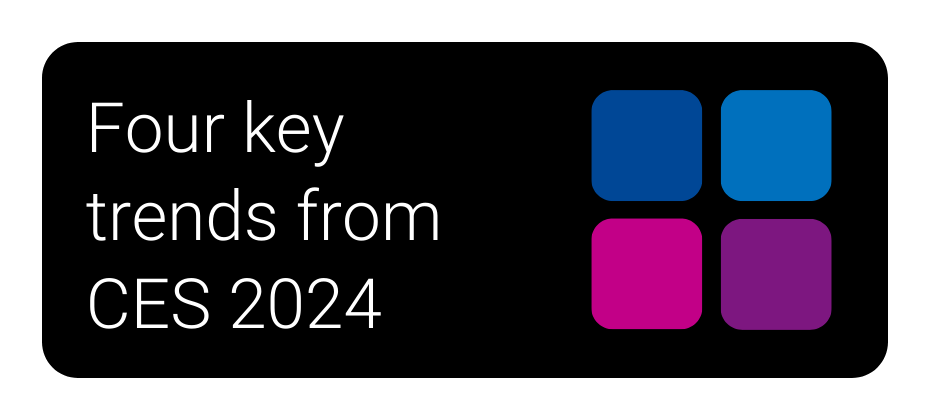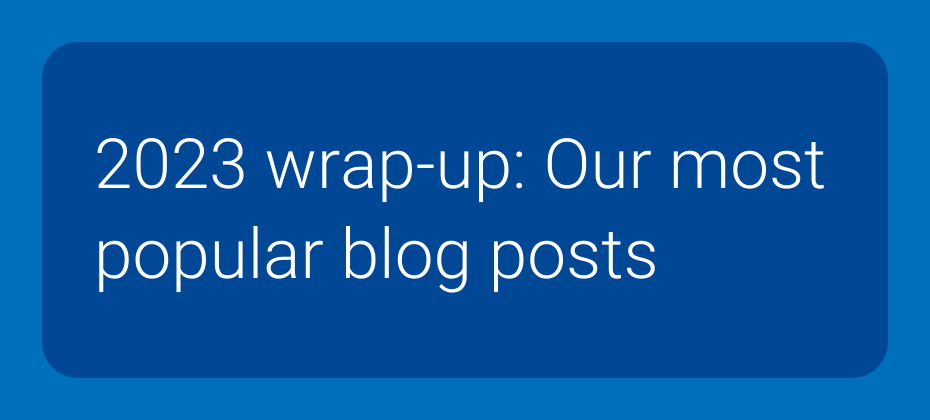As we approach the 2024 election season, the advertising landscape is poised for tremendous growth, with political ad spending projected to surpass $10 billion. With Kamala Harris entering the race, spending priorities have moved, especially in key states like Ohio, where the Senate race alone has already seen $300 million in ad spending. Connected TV’s (CTV’s) share of political ad spending is set to jump from 2.7% in 2020 to 12.8% this year. The Harris campaign is leading the charge, allocating $200 million for digital ads, much of which will go to streaming platforms.
During this political campaign marketing season, effective audience targeting is crucial, as it holds the potential to sway voters, shape public opinion, and ultimately determine election outcomes. In this blog post, we'll highlight political audiences that can assist political campaigns and organizations in connecting with their desired audiences in a meaningful and impactful way.
What separates Experian's syndicated audiences
Experian’s 2,400+ syndicated audiences are available directly on over 30 leading television, social, programmatic advertising platforms, and directly within Audigent for activation within private marketplaces (PMPs).
Reach consumers based on who they are, where they live, and their household makeup. Experian ranked #1 in accuracy by Truthset for key demographic attributes.
Access to unique audiences through Experian’s Partner Audiences available on Experian’s data marketplace, within Audigent for activation in PMPs and directly on platforms like DirectTV, Dish, Magnite, OpenAP, and The Trade Desk.
Three political campaign marketing audience categories
Over 240 politically relevant audiences are available on-the-shelf of leading TV, demand, and supply platforms to help your political partners gain share based on three political audience categories:
Political affiliations
Political personas
Relevant ballot initiative audiences
Let's break down each category and which audiences you can use in your political campaign marketing to target voters this upcoming election season.
Political affiliations
Target audiences could include those who are likely to be in the Democratic, Independent, or Republican parties, or are likely to not be registered to a political party. Our political affiliation audiences use a foundation of voter registration data with Experian's advanced statistical models to reach voters at scale, based on their political party.
Here are four audience segments that you can activate to target voters based on their predicted party affiliation:
Political Affiliation > Democrat
Political Affiliation > Republican
Political Affiliation > Independent/Other
Political Affiliation > Unregistered
Political personas
One key target audience could be voters who are likely to be influenced by a political candidate's renewable energy program. Additional target audiences could include those who are likely to be influenced by a candidate's position on the economy or healthcare.
Here are 10 audience segments that you can activate to target voters based on their viewpoints on key political issues:
Political Personas > Political Unregistered Liberal Leaning
Political Personas > Political Unregistered Conservative Leaning
Political Personas > Committed Democrats
Political Personas > Moderate Democrats
Political Personas > Political Leaning Liberals
Political Personas > Liberal Leaning Independents
Political Personas > Conservative Leaning Independent
Political Personas > Political Leaning Conservatives
Political Personas > Moderate Republicans
Political Personas > Committed Republicans
To reach voters who believe the environment is a key political issue, you can layer in our GreenAware audiences with our Political Personas audiences:
GreenAware > Behavioral Greens
GreenAware > Think Greens
GreenAware > Potential Greens
GreenAware > True Browns
Psychographic/Attitudes > Shopping Behavior > Smart Greens
To reach voters based on their regional voting patterns, you can use our new battleground counties and district audiences:
Affiliation Switcher Counties
Battleground Counties
House Battleground Districts
Democrat Counties
Republican Counties
Independent Counties
Relevant ballot initiative audiences
You can also reach voters based on their attitudes and behaviors related to key ballot measures. Let's walk through a few examples below and highlight relevant syndicated audiences that you can activate during the 2024 political campaign marketing season.
Local and national ballot initiative support
Consumer behaviors are often great predictors of down-ballot initiatives. For example, military families may show favor toward initiatives supporting veterans, households with children present may show more interest in school funding, and those interested in the environment will favor green initiatives. Experian offers an array of consumer behavior and interests audiences to help you fine-tune your targeting and messaging strategies.
Lifestyle and Interests (Affinity) > Occupation > Military – Active
Demographics > Presence of Children > Ages: 0-18
Charitable causes
Understanding where consumers are actively donating to charitable causes paints a clear picture into their political interests.
Lifestyle and Interests (Affinity) > Charitable Causes > Contributes to Political Charities
Consumer Financial Insights > Discretionary Spend - Donations > $1,000-$1,999
Demographics
Demographics play a critical role into voter opinions with presence of children, age, and household income influencing decisions at the polls.
Geo-Indexed > Demographics > Household Income: $50,000-$74,999
Geo-Indexed > Demographics > Education: Bachelor Degree
Demographics > Presence of Children > Ages: 10-12
Demographics > Marital status > Single
Demographics > Ages > 19-24
Lifestyle and Interests (Affinity) > Moms, Parents, Families > Mothers with infant child(ren) (0-3 yrs old)
Millions of campaign dollars were wasted in the 2022 midterm elections when voters were targeted with ads for issues and candidates they couldn’t vote for. Using advances in geo-targeting can help save wasted spend and ensure relevant messages reach the right voters.
Finance
Income and large financial decisions often trigger changes in perspective and influence voter behaviors.
Financial FLA Friendly1 > Income > $1,000-$24,999
Financial FLA Friendly > In Market New Mortgage
Financial FLA Friendly > In Market Auto Loan
Media consumption and engagement
Media consumption and engagement offers great insights into how voter interest, current channel engagement, and engagement in political issues.
TrueTouch: Communication Preferences > Engagement Channel Preference > Email Engagement
TrueTouch: Communication Preferences > Engagement Channel Preference > Streaming TV
Social Media > Snapchat
Purchase Transactions > Ad Responders > Digital
Television (TV) > Ad Avoiders/Ad Acceptors > Ad Acceptors
Mosaic
Proprietary persona-based audience solution that combines demographic and behavioral data to create a holistic view of voters and their interests.
Mosaic - Personas - Lifestyle and Interests > Group O: Singles and Starters > O55 - Family Troopers
Occupation
Provides the opportunity to deliver targeted messaging on measures based on a consumer’s occupation.
Demographics > Occupation > Management/Business and Financial Operations
Demographics > Occupation > Sales
Demographics > Occupation > Farming/Fish/Forestry
Consumer Behaviors > At-Home: Retired/Empty Nesters
Consumer Behaviors > Occupation: Education
Personal views
Understand consumers personal views around family, their social and work life.
Psychographic/Attitudes > Personal Views > Work Centered
Psychographic/Attitudes > Personal Views > Family Centered
Psychographic/Attitudes > Personal Views > Social Isolation
We can help you match your message to your audience
With Experian's political audiences, you can confidently execute your political campaign marketing, knowing our audiences are based on voter registration data and advanced predictive technology. Our highly accurate models are validated by our expert audience team to ensure precise targeting and drive impact and influence with the right audience. We understand that finding a trusted data provider can be a challenge, which is why we make it easy to access our syndicated audiences.
For a full list of all of Experian's syndicated audiences, download our syndicated audiences guide.
Download our syndicated audiences guide
You can activate our political audiences on-the-shelf of most major platforms. Can't find the audience you're looking for or need a custom audience? Connect with our audience team for more information. Additionally, work with Experian’s network of data providers to build audiences and send to an Audigent PMP for activation.
Connect with our audience team
Footnote
“Fair Lending Friendly” indicates data fields that Experian has made available without use of certain demographic attributes that may increase the likelihood of discriminatory practices prohibited by the Fair Housing Act (“FHA”) and Equal Credit Opportunity Act (“ECOA”). These excluded attributes include, but may not be limited to, race, color, religion, national origin, sex, marital status, age, disability, handicap, family status, ancestry, sexual orientation, unfavorable military discharge, and gender. Experian’s provision of Fair Lending Friendly indicators does not constitute legal advice or otherwise assures your compliance with the FHA, ECOA, or any other applicable laws. Clients should seek legal advice with respect to your use of data in connection with lending decisions or application and compliance with applicable laws.
Latest posts













